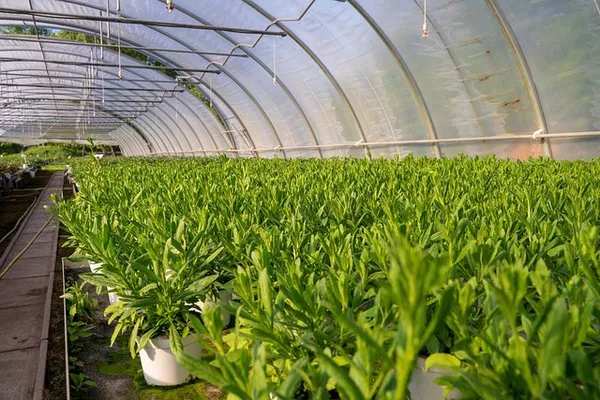Greenhouses are controlled environments that offer ideal conditions for cultivating plants. While they are effective in providing optimal temperature, humidity, and protection against external factors, there is one vital aspect that requires intervention: pollination. In natural settings, plants rely on various mechanisms to ensure successful pollination, including wind, water, and insects. However, within the confined spaces of greenhouses, these natural pollinators may not be readily available. Therefore, understanding and implementing appropriate pollination methods in greenhouses are crucial for maximizing crop yield and maintaining biodiversity. This article delves into the various pollination mechanisms utilized in greenhouses and their significance in ensuring successful plant reproduction.
The Importance of Pollination in Greenhouses
Pollination is the process by which pollen from the male part of a flower (anther) is transferred to the female part (stigma), facilitating fertilization and seed production. This crucial step is pivotal in the reproduction of flowering plants and the generation of fruits and seeds. In greenhouses, where plants are cultivated under controlled conditions, proper pollination is essential to ensure the production of healthy and abundant crops.
Natural Pollinators in Greenhouses
While greenhouses may not offer the natural abundance of pollinators as found in the wild, some insects can still find their way inside. These natural pollinators, such as bees, butterflies, and moths, can play a vital role in facilitating pollination within the greenhouse environment. However, it is essential to maintain a conducive ecosystem for these pollinators and prevent the use of harmful pesticides that could deter their presence.
Hand Pollination: A Manual Approach
In the absence of sufficient natural pollinators, hand pollination becomes a widely adopted method in greenhouses. This manual approach involves the transfer of pollen from the male flower to the female flower by hand. It requires precision, care, and knowledge of the specific plant’s reproductive structure.
To conduct hand pollination effectively, gardeners or farmers typically use a small brush or cotton swab to collect pollen from the anther and gently apply it to the stigma of the female flower. This process should be performed during the optimal time of day when the flowers are most receptive to pollen transfer, generally in the morning.
Hand pollination is time-consuming and labor-intensive, but it ensures a higher success rate in pollination, especially for plants with intricate reproductive structures or those that are difficult to pollinate through natural means.
Vibrational Pollination
Vibrational pollination, also known as sonication or buzz pollination, is a technique employed to facilitate the release of pollen from certain plant species. This method mimics the behavior of native pollinators, such as bumblebees, who extract pollen from flowers by buzzing their wings at specific frequencies.
To implement vibrational pollination in greenhouses, mechanical devices or specialized instruments are used to create vibrations near the flowers. These vibrations cause the release of pollen, which then falls onto the stigma, leading to successful pollination. Vibrational pollination is particularly effective for crops like tomatoes, peppers, and eggplants, which have flowers with tightly sealed anthers.
Air Circulation and Pollination
In greenhouses, maintaining adequate air circulation is crucial for ensuring effective pollination. When natural pollinators are not available, wind plays a vital role in transferring pollen between flowers. Therefore, the controlled circulation of air within the greenhouse is essential to carry pollen to receptive stigmas.
Fan systems are commonly installed in greenhouses to mimic natural wind patterns and ensure even distribution of pollen. Properly positioned fans can create gentle airflow that aids in pollination without causing damage to delicate flowers.
Artificial Pollination Techniques
In addition to hand pollination and vibrational pollination, several artificial pollination techniques have been developed and tested in greenhouses.
a. Pollen Injection: In this method, pollen grains are injected directly into the stigma using a syringe or microinjector. This technique is suitable for plants with larger flowers and easily accessible reproductive structures.
b. Electrostatic Pollination: Electrostatic fields are employed to attract and deposit pollen grains onto the stigma. This approach is effective in evenly distributing pollen over the target area.
c. Pollination Drones: Advancements in technology have led to the development of pollination drones equipped with pollen dispensers. These drones are programmed to fly systematically over greenhouse crops, releasing pollen as they pass by flowers, thereby simulating natural pollination.
Hybrid Pollination Approaches
Many greenhouse growers adopt hybrid pollination approaches that combine natural pollinators, hand pollination, and certain artificial methods. This hybrid approach ensures a greater chance of successful pollination and increased crop yield.
For instance, bumblebee hives can be introduced into the greenhouse to encourage natural pollination. In combination with this, hand pollination can be carried out for specific plants that require additional assistance, such as those with irregular flowering times or low pollen viability.
Conclusion
In conclusion, understanding the intricacies of pollination mechanisms in greenhouses is essential for successful plant reproduction and optimizing crop yields. Whether relying on natural pollinators, employing manual techniques like hand pollination, or implementing innovative artificial methods, greenhouse managers must tailor their approach based on the specific needs of the cultivated plants. By mimicking natural pollination processes or providing alternative methods, greenhouses can effectively overcome the challenges posed by the absence of traditional pollinators, ensuring the continuation of agricultural productivity and biodiversity within these controlled environments.


